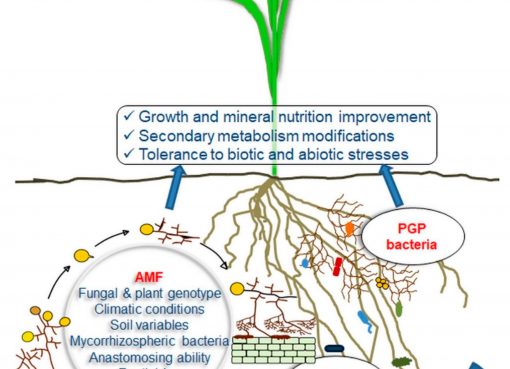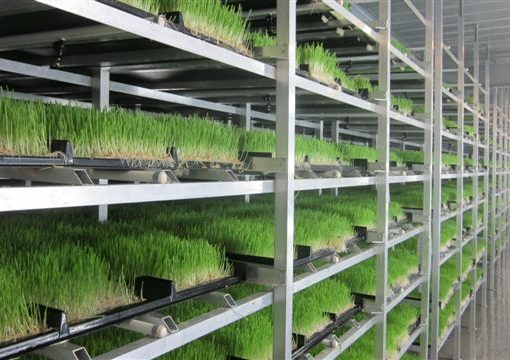In recent years, biological resource based economic activities are emerging as a powerful engine of economic growth and development. These economic activities are grouped under a new branch of financial system called bio-economy. The “Organizations for Economic Co-operation and Development” (OECD), describes bio-economy as the set of economic activities involving to the invention, development, production and use of biological products and processes. OECD is an organization of 35 member countries that promotes policies to ensure economic improvement and social well-being of people around the world. According to the “European Forum for Industrial Biotechnology and the Bio-economy” (EFIB), bio-economy includes the production of renewable biological resources and their conversion into food, feed, bio-based products and bioenergy using innovative and efficient technologies provided by Industrial Biotechnology. Bio-economy is already a reality and it offers huge opportunities and solutions to a growing number of major societal, environmental and economic challenges, including climate change mitigation, energy and food security, and resource efficiency.
Bio-economy is considered as one of the key substitutes to threats and limitations of current fossil-based economy. It is anticipated that the bio-economy will be the next wave in global economic development. In this context, EFIB advocates for a shift towards the best possible and renewable use of biological resources and towards sustainable primary production and processing systems. These systems have to produce more food and other bio-based products with minimized inputs. At the same time, these systems must ensure zero waste production, adequate societal value and minimization of environmental impact and greenhouse gas emissions. EFIB stated that the emphasis is given worldwide on developing innovative and affordable technologies, products or services which can address the challenges of securing global nutrition, shaping agricultural production sustainably, producing safe and healthy foodstuffs, using renewable resources in an industrial scale and developing biomass based energy sources.
India’s bio-economy is emerging as one of the fast growing economic activity. In a recent report, “Association of Biotechnology-Led Enterprises” (ABLE) has declared that the India’s bio-economy crosses $35 billion in 2015. Notably, India has set an ambitious target of achieving a bio-economy of $100 billion by the year 2025. This bio-economy report is a part of the “Make in India Biotechnology Handbook 2016” brought out by ABLE with support from various Government departments and industries like DBT, BIRAC, CII, KBITS, Bangalore BioInnovation Center, Biocon and Syngene. India’s bio-economy is mainly centered in biotechnology based industrial activities that include sectors namely, Bio-pharma and healthcare, Bio-services, Bio-agri, Bio-industrial and, Bioinformatics and System Biology. The bio-pharma sector is the largest element of the biotechnology industry in India followed by bio-services and then bio-agri sector. This sector primarily includes biologics (primarily vaccines and biosimilars), diagnostics, devices, medical informatics, contract manufacturers and healthcare delivery systems. Bio-services, the second largest sector includes contract and clinical research organizations (CROs) and contract manufacturers (CMOs). Bio-agri sector aims to increase food productivity. The major options considered to achieve this target are use of hybrid technology and minimizing losses through environmental and pesticide stresses by means of Marker Assisted selection (MAS) and genetic engineering techniques. The key players in bio-industrial sector are biorefineries and white biotechnology that involve optimization of bioprocess and development of products i.e. enzymes, biofuels, biopolymers, amino acids, organic acid and antibiotics and other drugs. Experts opined that India has ample strength for bio-economy in terms of available skilled manpower and highest quality standards in manufacturing. India has a large number of qualified and trained manpower and the manpower cost is much lower as compared to other nations. Outside the US, India has the highest number of FDA (Food and Drug Administration) approvals in the world-class facilities for manufacturing that comply all international standards.
North East India as a whole has potency in all the sector of bio-economy. The region is very rich in biomass production and the physical environment is highly conducive for biotechnology based industrial set-up and enlargement. Using biotechnology the less-used biological resources can be converted into economic prosperity and employment opportunities. It is worth mentioning that the generation of skilled man power in NE region is on a sharp increase. Infrastructural facilities are also coming up in academia and industries. The region annually produces a good number of graduates, post graduates and PhDs in science, technology and engineering streams.
In the bio-pharma sector, main emphasis is given on the production of vaccines and biosimilars where NE India can play a big role. The leading Indian vaccine products are for Hepatitis B, Rotavirus vaccine, Vaxi-Flu-S and Swine flu vaccine. Industry-academia joint venture can be encouraged in NE India for development of safe, effective and affordable vaccines against a number of emerging and neglected viral diseases of human and animals. NE India may become a major player in bio-agri sector. Major options available to increase food productivity include hybrid technology and reducing losses due to biotic and abiotic stresses using marker assisted selection (MAS) and genetic engineering. As the NE India is a home for wild relatives of several commercial crops, there is prospect for identification of new resistance gene against stress which can be used in transgenic technology for crop improvement. This region produces a huge amount of biomass which can be used for production of industrial enzymes and biofuels under bio-industrial sector. Biomass-based bio-refineries are a promising process for biochemical and thermo-chemical conversion of biomass. Organic acids, bio-alcohols and biopolymers are produced using these processes. NE India generates a huge quantity of agricultural residues annually which could be a prospective feedstock for fuel production. However, according to experts, the changeover toward a bio-economy will depend on the improvement in technology of a range of processes, on the achievement of a breakthrough in terms of technical performances and cost efficiency and will depend on the availability of sustainable biomass. However, there will be an increase of competition for natural resources to fill up the demand for biomass for bio-based materials as well as for bio-energy which may impose negative impact on the land use pattern, biodiversity and environment. So, efficient mechanisms have to be developed to ensure biomass production. Improvement of livestock breeding up to the expected level and increase in crop yield may contribute in the production of biomass to sustain the increasing demand.
Author: Dr. Pratap Jyoti Handique
Professor of Biotechnology,
Gauhati University, Guwahati, Assam.
Mobile: 9435012920




